New research presented at the Workshop on Terrestrial Analogs for Planetary Exploration used the Haughton impact crater in Arctic Canada as a potential analog for impact craters on Titan, one of the targets of the upcoming Dragonfly mission. Plus, giant spinning structures, the slowing of the Milky Way, a blinking star, and volcanoes here on Earth.
Podcast
Transcript
Hello and welcome to the Daily Space. I am your host Dr. Pamela Gay.
And I am your host Beth Johnson.
And we are here to put science in your brain.
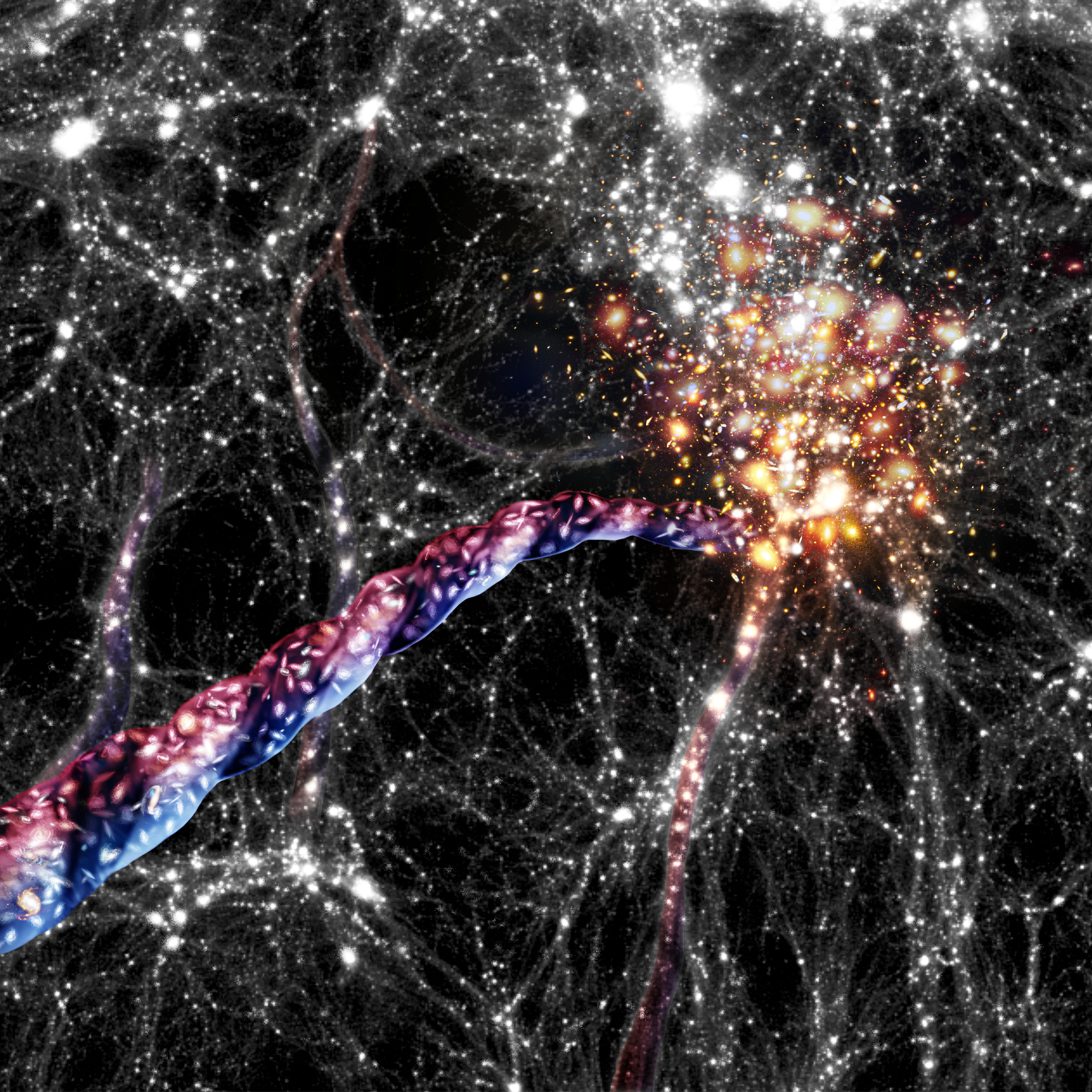
One of the more fascinating parts of astronomy is that the Universe continuously surprises us with what I would have thought is impossible. But part of exploration, to ruin the language of Lewis Carroll’s Red Queen, is believing as many as six impossible things before breakfast.
Yesterday, I found an amazing article in Nature Astronomy that discusses the surreal discovery that even the largest filaments of galaxies may be spinning ever so slowly as they trace the fabric of the Universe.
After the Universe formed, there were the slightest of irregularities in the distribution of matter. These tiny irregularities collapsed into galaxies and the stars they contained, and gravity has pulled these galaxies into vast structures that resemble walls, filaments, and clusters. The Sloan Digital Sky Survey captured data on thousands of these filaments, and Peng Wang and his team realized that by looking separately at the galaxies to either side of the filament’s center and averaging their motions, they could see if there was any systematic rotation, and they found it. This rotation was easiest to discern in denser filaments and in colder filaments. These are the largest objects ever seen to have rotation, and they show that there is a dance to the motions of everything in the sky across the largest of structures, and it is magnificent.
At a certain level, everything in the Universe is in motion, from the electrons in our bodies’ atoms to, we now know, the vast filaments of the universe’s large-scale structure. That motion isn’t constant, however.
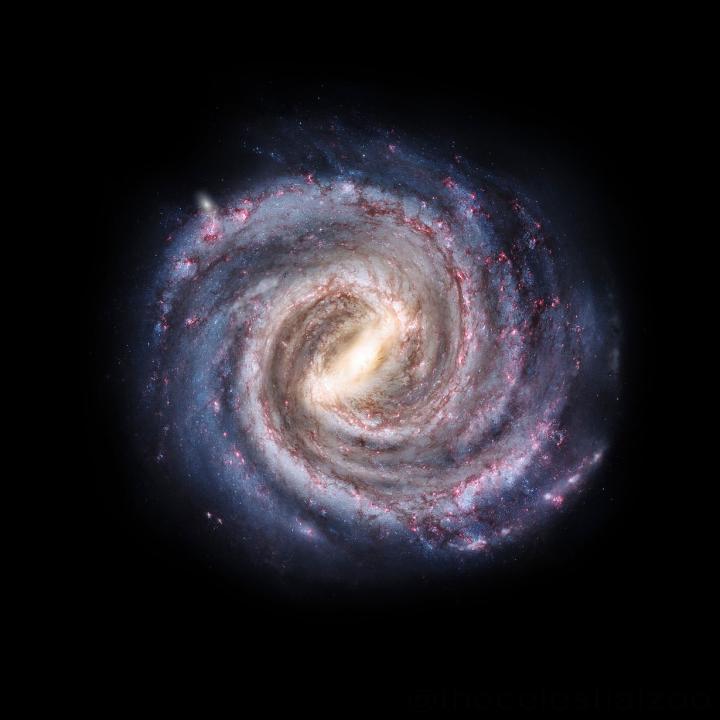
We live in a large spiral galaxy that has a bar of stars spanning its core. Researchers Rimpei Chiba and Ralph Schönrich looked at data on the positions and composition of the Hercules stream of stars, which orbits in lockstep with the galactic bar. In a paper appearing in the Monthly Notices of the Royal Astronomical Society, they note that the composition of these stars is wrong for the part of the galaxy they are currently in: they have too many heavy metals and look more like stars from the galactic core.
They are able to explain these misplaced stars if the bar’s rotation has slowed over time, causing these locked-in-place stars to migrate outward as they slowed and maintained their position relative to the bar. To slow the bar requires dark matter. If the over-density of stars and gas could gravitationally pull in slow-moving dark matter, the bar would be slowed, and they estimate that the bar has slowed at least 24% from its original speed. What is most fascinating to me about this result is that it requires dark matter to be stuff and not a modification to gravity. Now, we just have to find that stuff.
Dark matter isn’t the only stuff in the Universe that we have no idea what is. In April 2012, a giant star was seen to drop in brightness by 97% across all colors, and it stayed dimmed for a few hundred days. This is not normal, and astronomers have kept watching this star for nine years, watching to see if it would once again go dark.
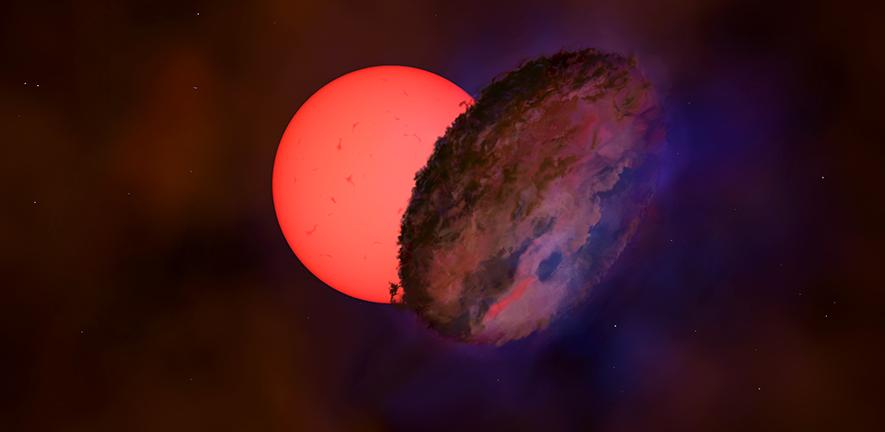
Not only has the star never dimmed again, but the star seems to have been utterly unchanged by this event. This indicates that, in all likelihood, something passed in front of the star. What that something was? No idea. Whatever it was, it was big. To block that much light, it would be so thick it could span a quarter of the way from the Sun to the Earth and be bigger than the star in diameter. How this kind of object finds itself both gravitationally held together and passing a star? Well, one of the best ideas the researchers came up with is a black hole surrounded by a cloud of dusty, messy debris. We will probably never know for sure what this was, but it’s cool to imagine there are black holes out there, surrounded by a disc of dark stuff, periodically just dimming stars.
When it comes to material hiding in plain sight, so to speak, Earth has its own fair share. For example, scientists hypothesized that the dinosaurs went extinct, in part, due to the collision of a huge asteroid with Earth. There was a lot of evidence for this fact, mostly in the form of the K-T boundary layer, which can be found all over our planet. This boundary is a thin layer full of iridium, and that just does not occur naturally here in the quantities present in that layer. It’s space dust that is found in asteroids. But where was the evidence of that impact?
Earth isn’t like the Moon or Mars. It doesn’t keep its record of impacts there for all the world to see and find for eternity. We have weather and plate tectonics. Earth’s surface is constantly changing. Trees grow. Rocks erode. And soon, a crater is lost to time, at least as far as our surface-bound eyes can tell.
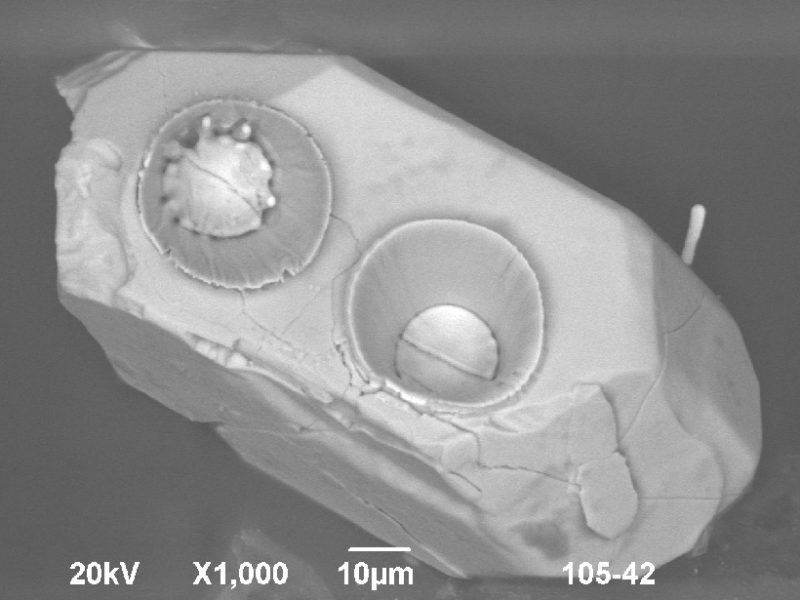
But then we started taking sonar measurements of our oceans and seas. Some of it was to protect us during wartime, and those measurements led to the evidence scientists needed to accept plate tectonics as fact. Some of it was to find oil, and while the oil companies were a little stingy on sharing, when they did, that’s how we found the evidence to pinpoint just where our dinosaur-killing asteroid smacked into Earth — Chicxulub crater off the coast of the Yucatán peninsula in Mexico. Combined with gravity measurements and satellite imagery, the crater was finally revealed.
And now, scientists have sampled granitic rocks in and around the crater and found something else hiding in plain sight — the remnants of a volcanic arc. Using zircon crystals found in the rocks, scientists measured the lead content as a way to date when uranium present in the crystals began to radioactively decay. This process begins when the crystals solidify, so we can then date the age of the crystals.
Graduate student Catherine Ross did what graduate students do. She measured the age of 835 individual zircon crystals, boring into each of them with a laser to get the data needed, and then she analyzed the data and broke the ages into three groups. One group was 1.3 to 1 billion years old, making it a part of the supercontinent Rodinia. The next group was 550 million years old, and that meant the supercontinent Gondwana. The final group was between 500 and 400 million years old, and these crystals are the evidence for that volcanic arc that formed when the Rheic ocean subducted under the edge of that Gondwana plate. As we have discussed before, subduction – where one plate slips under another plate – causes volcanic arcs.
And voila! Another piece of the puzzle literally fits into place in the history of Earth’s continental movements and formation. Science is amazing.

By training, I’m an astronomer. Growing up and all through my university years, my mind was always in the stars. As a journalist, however, I’ve found myself learning things about geology I never learned in school. At my first planetary science conference back in 2003, I found out that here on Earth, we have volcanoes that are in every scientific way the same as volcanoes on Mars and the Moon, and researchers will study satellite images of all the different worlds looking for the things that look the same from space, so they can hike out with tools and literally poke and hammer on the versions here on Earth.
The Earth features that are like geological features on other worlds are called analogs, and they come in many forms. There are sub-freezing, volcanic caves here on Earth that are like those on Mars, we think, and dune fields migrating across the Australian desert that are like the dunes on every terrestrial world with an atmosphere.
Studying these Earth analogs to features on other worlds is particularly important as we prepare to send rovers, fliers, and even people to other worlds. The Dragonfly mission to Saturn’s moon Titan will take off in 2027 with plans to land near a large crater in 2036. This site was selected because the energy of an impact would melt the icy surface of Titan and possibly allow for the kinds of chemical reactions that could lead to life to begin to take place. Because everything would re-freeze, it’s expected these chemical reactions got stopped partway through whatever they were doing, and Dragonfly is going to flit around trying to understand how close to supporting life Titan got.
To most effectively use the little flier, researchers need to understand where in the crater’s structure what kinds of things may have occurred. This means looking for an Earth analog.
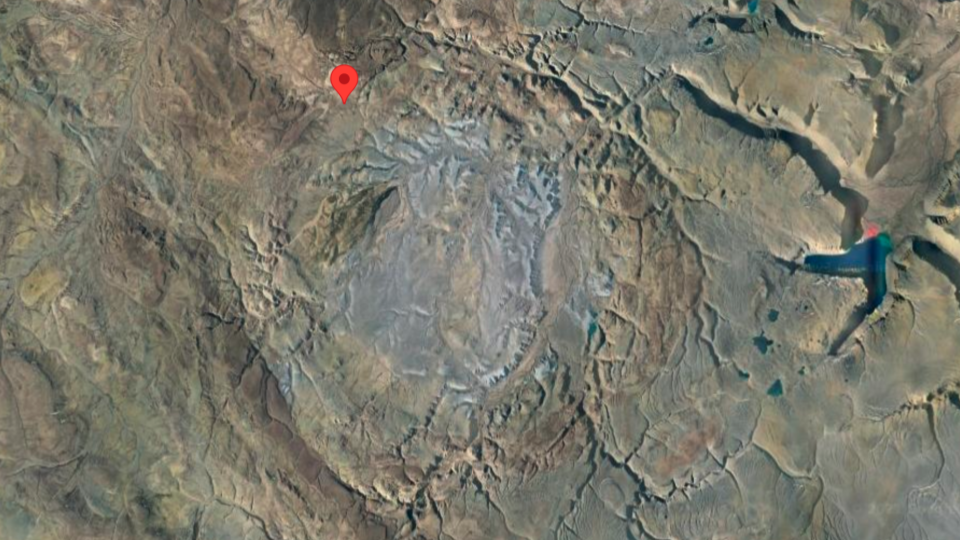
Titan has such a cold temperature and sufficiently low gravity that in its thick atmosphere, methane acts like water does on Earth. It rains and snows and freezes and flows in streams, all according to the seasons. To find a Titan-like crater on Earth meant looking for a crater in the permafrost.
And Canada was happy to oblige. The Haughton Impact Structure on Devon Island in northern Canada formed about 23 million years ago. While flowing water and moving glaciers have worn away some of the impact structures, its central region still has pristine materials formed during the impact, and remarkably, some of these materials are exposed thanks to those rivers and other forms of erosion. According to a presentation at a conference yesterday that was given by Catherine Neish on behalf of her team, sampling Haughton allows them to experimentally confirm where organic molecules concentrate and where cliff faces erode and dump their material.
I look forward to seeing researchers explore this crater with their drones and good old-fashioned hiking gear, as we learn what Dragonfly may find on Titan and practice for its explorations.
Like Pamela, I am fascinated by volcanoes. So much so that my favorite moon, as I’m sure you’ve all heard me mention a billionty times, is Io. I’m still getting into this Titan business, and I’m definitely looking forward to Dragonfly. In the meantime, we have plenty of volcanoes here on Earth to be fascinated by. Some of them are a little scary, like the supervolcanoes. Yellowstone for one. I have a graphic I share that is basically, “Yellowstone is overdue for an eruption so just do the thing you were thinking of doing.” But Yellowstone isn’t the only scary supervolcano out there.
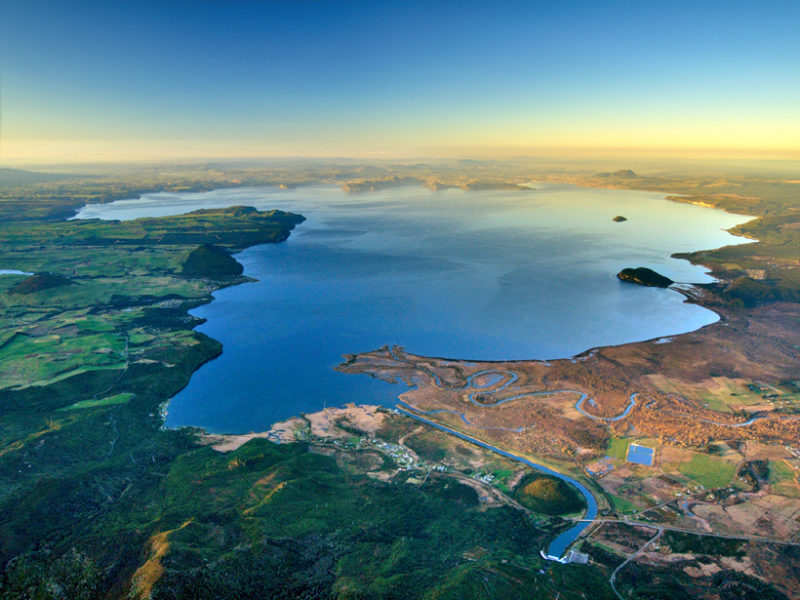
Some of you may recall that there was a deadly eruption of Whakaari in 2019. Whakaari, also known as White Island, is a volcano in the Bay of Plenty off New Zealand. It’s by far not the only volcano in New Zealand. There is also a supervolcano called Taupō. Twenty-five thousand years ago, this volcano erupted and sent enough ash and pumice into the air to cover the entire state of California in 2.8 meters of debris. It is the largest volcano eruption found to date.
The caldera of Taupō sits on New Zealand’s North Island, and while the odds of another supereruption are basically zero, there are smaller eruptions that have happened there, at least 28 since that supereruption. And an eruption somewhere between small and super is a possibility, and that has scientists studying the caldera. Last year, Taupō experienced an unusual level of seismic activity, causing concern that an eruption could be imminent. This possibility is not a certainty. Volcanoes often just have a low level of seismic activity as magma moves around underground which doesn’t necessarily indicate a build-up in pressure that could lead to an eruption.
So when a seismic swarm occurred in 2019 near a 7000-year-old lava dome in the caldera, scientists involved in a research project called ECLIPSE, or Eruption or Catastrophe: Learning to Implement Preparedness for future Supervolcano Eruptions, installed eight new seismometers around the caldera. There are plans to install another five. Wonderfully, all these installations are being done with the cooperation and involvement of the local communities and landowners, allowing the people who would be most impacted by an eruption to participate in the research.
With all the new sensors in place, data can now be collected on even more earthquakes, including those under magnitude 2.2, which was the previous threshold for the older seismometers. And the network will allow scientists to directly image the magma system using geophysical data. That imaging has never been done before since the magma chamber is below Lake Taupō. The research team even hopes to create a 3-D image of the crust, and that’s just plain cool.
This is an exciting project, and we’ll keep you updated as the team releases its results.
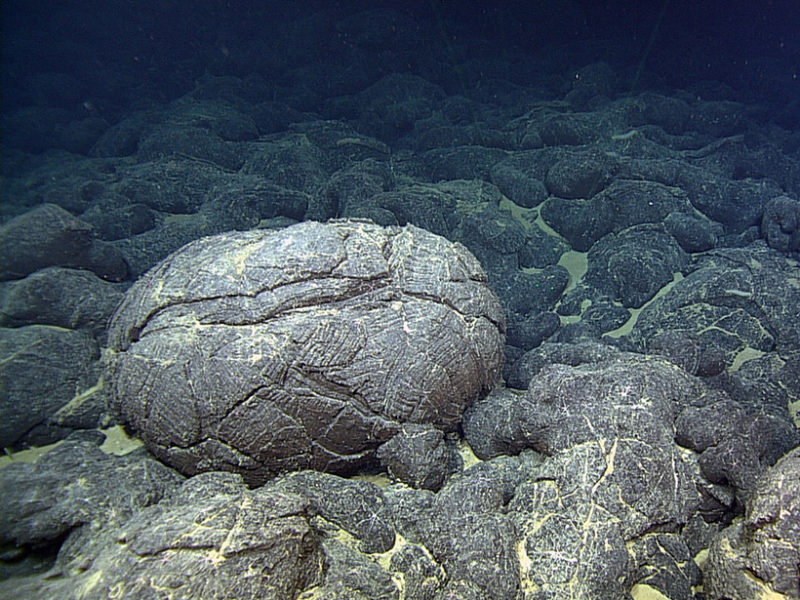
Back when I was a graduate student, I had the opportunity to be part of the scientific team exploring an undersea volcano. That volcano was the Axial Seamount, which lies about 250 miles off the coast of Oregon. It’s a part of the Juan de Fuca Ridge, and like the Mid-Atlantic Ridge, Juan de Fuca is spreading apart, and new rock is being created as lava erupts on the seafloor. Similar to Iceland, Axial Seamount is also over a hot spot. So there are two types of volcanic eruptions going on, and eruptions occur fairly regularly. In fact, our cruise in 2016 followed on the heels of an eruption in 2015 that happened as predicted. The seamount and nearby area have a bunch of instruments helping detect eruptions, and that’s how scientists know what is going on when.
Now, an investigation of the seamount done just last year using seismic imaging data has revealed something pretty cool about this volcano. They have found evidence of stacked magma chambers beneath the main magma reservoir that feeds this system. So there’s a hot spot with its own magma chamber, and beneath that, more magma chambers. And those magma chambers are also located along the ridge where the hotspot isn’t a factor.
The chambers are basically a crystal mush zone, which is mostly crystallized rock but also has a decent amount of melted rock. It’s still mostly solid. The chambers extend about 1-8 kilometers along the ridge itself, with the shallowest at about 100-1200 meters below what we call the axial melt lens. That lens is the thin, narrow reservoir of magma that feeds the spreading center. It’s well below the seafloor but nowhere near the mantle. Earth is a bit of a layer cake, and it’s hard to imagine the distances involved.
These chambers probably don’t exist for long. They likely come about as magma rises up to replenish the melt lens, melting pockets of existing crustal rock along the way. Then those pockets are tapped like a maple tree to also contribute to the magma that eventually erupts on the seafloor.
Oh, and just for you, Pamela, this volcano is nice and safe. It doesn’t impact any people. It simply goes about its business, erupting regularly and creating more rock.
This has been the Daily Space.
Learn More
Filaments of Galaxies Spin Threads Through Universe
- AIP press release
- “Possible observational evidence for cosmic filament spin,” Peng Wang et al., 2021 June 14, Nature Astronomy
Dark Matter Tugs at Milky Way Galaxy’s Central Bar
- University College London press release
- “Tree-ring structure of Galactic bar resonance,” Rimpei Chiba and Ralph Schönrich, 2021 April 19, Monthly Notices of the Royal Astronomical Society
Massive Distant Object Obscures Star
- University of Cambridge press release
- “VVV-WIT-08: the giant star that blinked,” Leigh C Smith et al., 2021 June 11, Monthly Notices of the Royal Astronomical Society
Ancient Volcanic Arc Hidden in Chicxulub Impact Crater
- Vestiges of a Volcanic Arc Hidden Within Chicxulub Crater (Eos)
- “Evidence of Carboniferous arc magmatism preserved in the Chicxulub impact structure,” Catherine H. Ross et al., 2021 April 30, GSA Bulletin
Craters in Northern Canada Offer Clues to Titan
- PDF: The Haughton Impact Structure as a Titan Impact Crater Analogue: Applications to the Dragonfly Mission (conference abstract)
Seismic Swarm Leads to Community-Involved Research
Evidence of Stacked Magma Chambers Found in Pacific
- Magma Pockets Lie Stacked Beneath Juan de Fuca Ridge (Eos)
- “Stacked Magma Lenses Beneath Mid-Ocean Ridges: Insights From New Seismic Observations and Synthesis With Prior Geophysical and Geologic Findings,” Suzanne M. Carbotte et al., 2021 March 24, JGR: Solid Earth
Credits
Written by Pamela Gay and Beth Johnson
Hosted by Pamela Gay and Beth Johnson
Audio and Video Editing by Ally Pelphrey
Content Editing by Beth Johnson
Intro and Outro music by Kevin MacLeod, https://incompetech.com/music/


 We record most shows live, on Twitch. Follow us today to get alerts when we go live.
We record most shows live, on Twitch. Follow us today to get alerts when we go live.